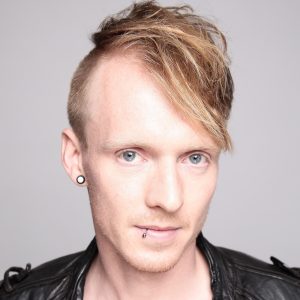Tom Rocks Russia
28 Oct 2020|Tom Crawford
- Research
And now for something completely different. Breaking away from the usual – and of course fantastic – Teddy Hall blog posts, in true Tom Rocks Maths style, I thought I’d try something a little more ‘outside of the box’. Last summer I was invited to ITMO University in St Petersburg, Russia, and here is a written/video diary of my stay.
It didn’t start well. A 5am wake-up for an early morning flight, which was subsequently delayed just enough for me to miss my connection and have to spend 6 hours trapped in the labyrinth that is Frankfurt airport, is not my idea of pleasant. But undoubtedly the worst part was missing the boat tour of St Petersburg, scheduled to leave just as I was landing at the airport… Fortunately, things did indeed only get better.
The first day saw our group of assorted journalists/academics/communicators taken to the restoration workshop of the Hermitage Museum – the second largest Art Museum in the world and undoubtedly one of the jewels of the metaphorical Russian Crown. We began with a tour of the photograph restoration laboratory, before we ascended to the upper level and the home of damaged ancient artefacts. Surrounded by priceless objects in the form of mosaics, tapestries and even an Egyptian sarcophagus, the incredible attention to detail in the work of the restorers was a work of art in and of itself. Talking to a proud restoration veteran of over 40 years, the group was in utter disbelief on hearing how she had spent the past 5 years working on a single mosaic no larger than an A3 piece of paper. Patient is not the word.
After a short pit-stop for a traditional Russian lunch of Borscht (what else), we headed to ITMO University and the Museum of Optics. Now, before you form a (most likely unflattering) image of the museum in your mind, let me just say that this was quite possibly the best interactive museum that I have ever visited. The key word here is interactive, and this place was an adult’s playground. Create a 3D hologram of yourself? Check. Watch a light display using glass made from almost every element of the Periodic Table? Check. Look at priceless jewellery and artwork normally locked away from the public eye through holograms so real that you wouldn’t know without reading the label? Check. And all of this was housed in the former mansion of a Russian merchant who fled the country during the revolution for fear of his life, complete with hidden doors and secret passageways. I really cannot recommend this place highly enough.
Day two had a lot to live up to, and whilst nothing could top the high of the Museum of Optics (in case you haven’t realised yet, I really liked it there), our visits to two corporate giants of Russia did not disappoint. We began at Gazprom – if you watch Champions League football you’ll know them as the main programme sponsor, otherwise think of the Russian version of BP/Shell. After an opening address from an entire team of senior management, we heard from several scientists working at the company about the ground-breaking new technologies being used by the company out in the field to extract more, and better-quality oil than ever before. Our attempts to question the environmental impact of their practices were, let’s say, lost in translation, but for the copious amounts of corporate stash we received the visit cannot be classed as anything other than a success.
Next on the agenda was JetBrains. I imagine you’ve never heard of them (neither had I), but if I mention the programming language ‘Kotlin’ then perhaps things are a little more familiar. First released in 2016, it is the fastest growing programming language in terms of users with the total number now standing at over 2 million, and in May 2017 it received the gold standard from Google when it was officially announced as a first-class developer language for Android. In other words, it’s the current hot topic in the world of programming. Not only were we treated to a tour of their brand-new purpose-built office building overlooking the bay, I also had the chance to interview the man behind Kotlin, Andrey Breslav, on what it was like to work on such an exciting project from the very beginning. You can watch the video here.
The third and final day saw a return to ITMO University for a whirlwind tour of the labs, featuring everything from robotic strawberry pickers controlled by a mobile app, to spiders mined for their silk to make new super-strong nanomaterials with possible applications in lightweight body armour. An afternoon tour of the city before an evening at the ballet to watch ‘Giselle’ rounded off a highly successful trip with our fantastic hosts. I hope to return next year to teach a module as part of their Science Communication Master’s Programme – the only one in Russia – but in the meantime I’ll keep rocking Russia Maths.
To end, here’s a short video featuring some of the visual highlights of the trip:
Category: Research
Author

Tom
Crawford
Dr Tom Crawford is a Fellow by Special Election in Mathematics at St Edmund Hall with a mission to share his love of maths with the world. His award-winning website features videos, podcasts, articles and puzzles designed to make maths more entertaining, exciting and enthralling for all. Whether he’s performing live as the Naked Mathematician with Equations Stripped, telling you the fun facts about numbers that you didn’t realise you’ve secretly always wanted to know with his Funbers series on the BBC, or getting another maths tattoo (6 and counting), it’s safe to say Tom is always finding new ways to misbehave with numbers!
You can find more maths-based fun on Tom’s award-winning website and follow him on Facebook, Twitter, YouTube and Instagram @tomrocksmaths for the latest updates.